Loughborough AGS Show 2010
Loughborough Show day saw a
It was good to see entries in all three 6-pan classes and the 19cm pan AGS Medal attracted three quality entries. Gill and Paul Ranson’s entry of Hepatica japonica, Saxifraga ‘Tenerife’, two Cyclamen, two of the best forms of Dionysia tapetodes and D afghanica being ‘Sulphur’ and GW/H 1308 respectively, was voted the first.
John Gennard took the 36 cm AGS Medal with some splendid Hepaticas supported by huge pots of Corydalis malkensis, Primula bhutanica and Eranthis ‘Guinea Gold’.
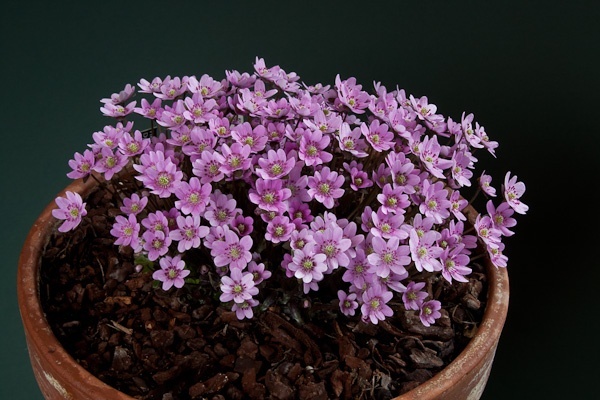
His Hepatica japonica var magna was also awarded a Certificate of Merit.
The hall was absolutely full of some superb snowdrops, many of which I suspect had been raised especially for the event. Thank you, exhibitors, for risking the appearance of your garden for the sake of the show. I am sure that the plants will benefit from their change of soil. I particularly liked the excellent pans of the yellow marked forms with yellow ovaries, Galanthus nivalis ‘sandersii group’ and huge pans of very robust looking Galanthus ‘Sophie North’ were still looking pristine in spite of their previous outing the week before.
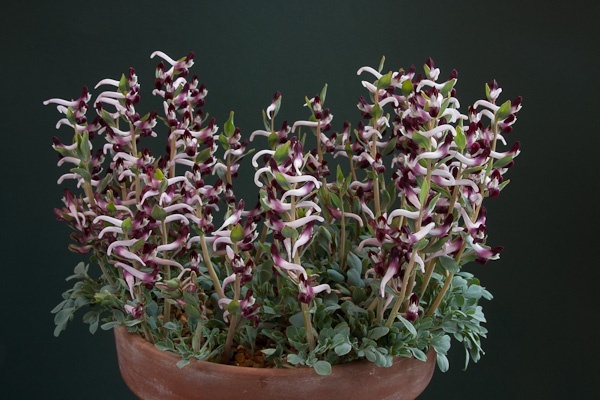
Corydalis have been very late this year and have really benefited from the increased day length and light quality caused by their late emergence. The Leontocoides section which are plants of snow melt in the wild are beautifully dwarf, even ground hugging, this year. Mike Chadwick’s C popovii was an excellent case in point for this normally flowers at least three weeks earlier most years. It was noticeable that it grew at least 3 cm during the day under the lower light conditions of the show hall.
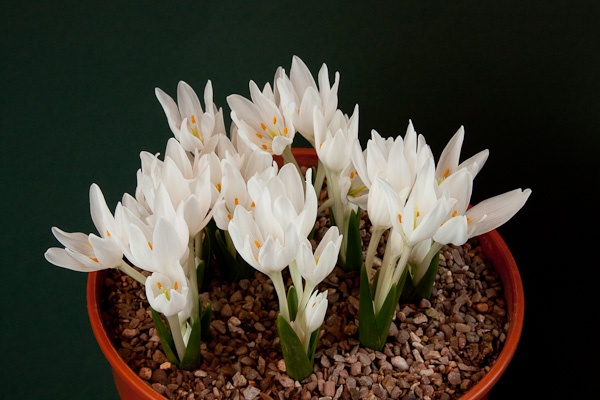
Other trophy winners were
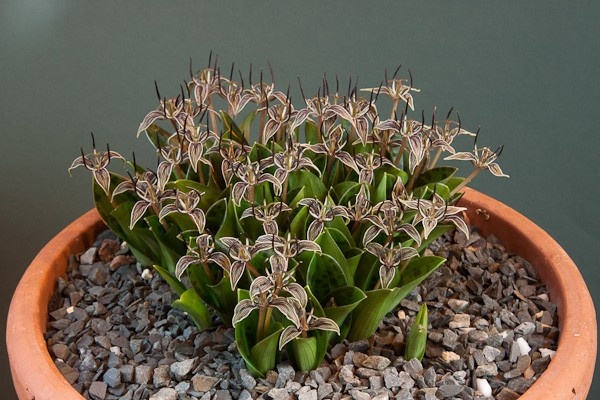
If the scent of wet dog from little, odd shaped, brown flowers is your thing then you will like Bob & Rannveig Wallis’s Scoliopus bigelovii which was also a second year running winner, this time of the American Trophy. This revels in the deep shade of coastal coniferous forest in
It was these exhibitors who won the Charnwood Trophy for the most first prize points in the Open Section. Their largest exhibit was a 6-pan entry for the plants grown from seed and included: three rare fritillaries, Hyacinthella glabrescens in an ice blue colour form which had arisen from a white flowered parent, Corydalis shanginii var ainii, and a striking Galanthus plicatus form raised from Galanthus ‘Trym’ with large green marks on the outer segments which they have named ‘Corrin’.
An AGS Spoon was awarded to a fine six pan entry ( class 84 ) shown in the intermediate section by Neil Hubbard.
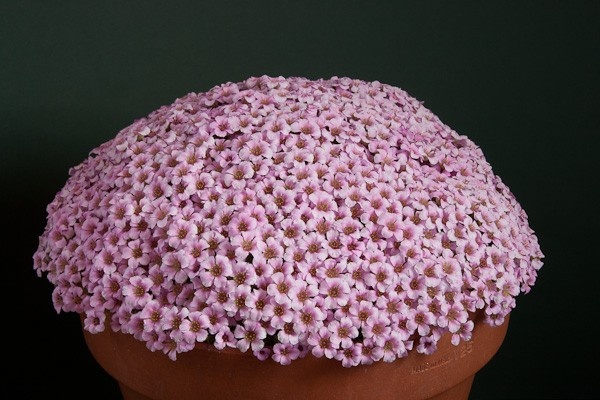
The Saxifrage group Salver was awarded by unanimous decision to Saxifraga x poluanglica, (incidentally, runner up to the Farrer) , shown by Alan and Janet Cook.
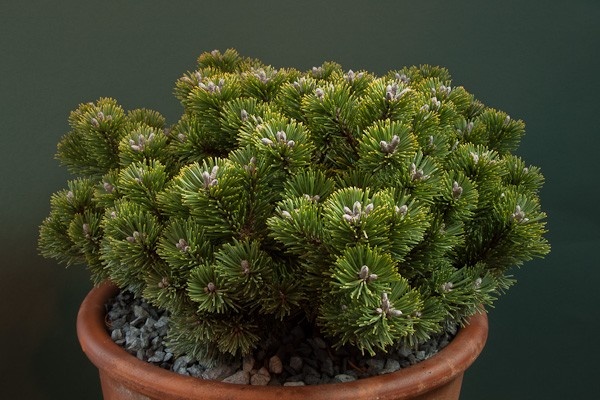
Another certificate of merit was awarded to an outstanding specimen of Pinus aristata, shown by John Savage.
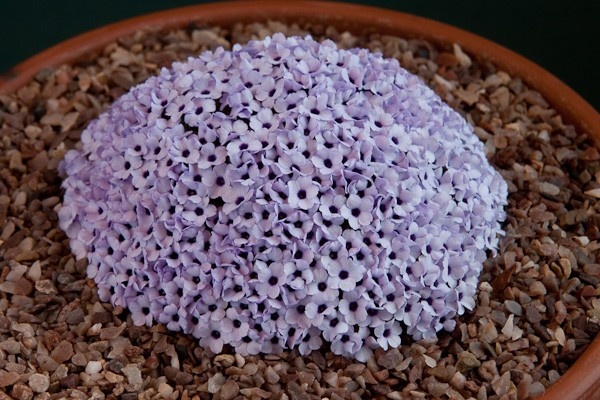
And so to the Farrer: This Dionysia afghanica, shown by Mike and Christine Brown, was the fancied favourite for the highest award last week but was pipped at the post by a splendid Iris. This week it duly won by a head. The judges commented on how fresh the flowers were. This is of course unusual for such a species which flowers in February most years. In fact I recall that this same plant won the Silver Jubilee award at the South Wales Show in 2009, itself a late season, a full three weeks earlier.
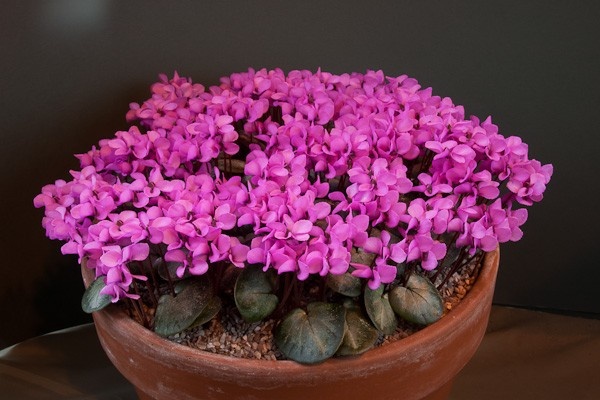
Mike and Christine also won the Cyclamen Society Salver with their plant of Cyclamen coum.
Had the big freeze stopped? No it hadn’t. The next night saw a -4oC locally and a continuation of beautiful sunshine in the day time but a cold wind keeping the temperatures well below the seasonal average. What of
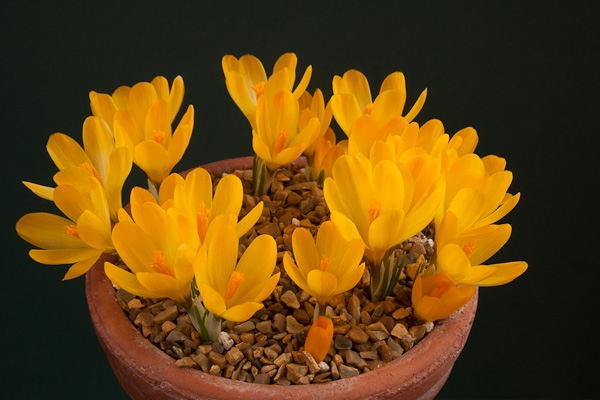
I cannot leave this report without commenting on the excellence of the Crocus on display. It is pretty unusual to see this genus at this stage of the season, but there were some fantastic pots of CC cvijicii (awarded a deserved Certificate of Merit for
